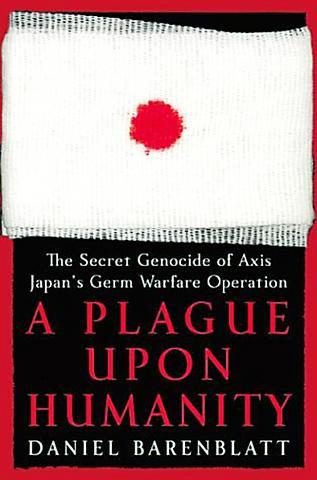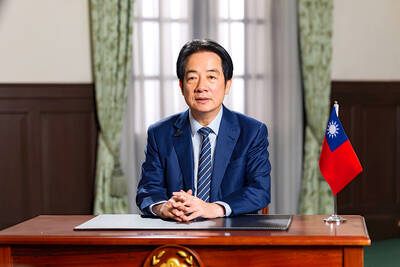A secret Japanese army unit, dubbed Unit 371, sprayed Chinese villages with bacteria, spiked their wells with disease and laced their food with germs, perhaps killing up to a million Chinese in World War II, a new book says.
"There could be over 700,000 or even 1 million" lives lost to Japan's biowarfare program, Daniel Barenblatt, author of A Plague Upon Humanity, said in a recent interview.
The book, published in the US by HarperCollins, tracks Japan's development of biological weaponry from 1931 to 1945 and its use of these weapons -- bubonic plague, typhoid, anthrax and cholera -- on civilians, many of them in China.

The biowarfare weapons were sprayed by airplanes on villages, or distributed in food, or passed through bacteria put in water wells. Some early weaponry involved dropping ceramic-shelled bombs filled with live flies and jellied cholera emulsion.
"Japan's biological warfare program in China was, as far as we know, the first use of scientifically organized germ warfare in history," said Iris Chang, author of The Rape of Nanking, the acclaimed book about the brutal Japanese occupation of the eastern Chinese city in the late 1930s.
Barenblatt says the number of lives lost to biological warfare has been difficult to determine because the victims and their families, many of whom lived in remote villages in China, did not know why they became ill after being exposed to biological weapons unleashed by the Japanese army.
"These are poor people who are for the first time telling their stories. They, at first, thought it [their illnesses] was an act of nature. Many had no idea what was happening to them," said Barenblatt.
In addition to those who died as a direct result of diseases unleashed by Japanese scientists and the military, others suffered physical disfiguration and prolonged health problems.
Many of the biological weapons were used in an attempt to sap China's resistance to the Japanese invasion during the 1930s and 1940s, according to Barenblatt's book, which tells of World War II prisoners of war from Britain, the US and Australia who were also test subjects.
According to Barenblatt, the plague bacteria released then still lingers on in some animal populations today. "As far as I know there have not been major plague outbreaks in China in recent years. [But] It is still there ... rodents still test positive for antibodies to the bubonic plague," he said.
One of the largest promoters of Japan's biological warfare efforts was Shiro Ishii, a physician with a doctorate in microbiology from Kyoto Imperial University, according to Barenblatt.
An inventor of a water-purification system, Ishii eventually involved many Japanese universities in biowar research and much of this research was spearheaded by a Japanese army biowar unit known as Unit 731.
Initially based in Harbin, in China, Unit 731's main research center was moved southeast to a more remote locale in Beiyinhe, where the village of 300 homes and shops was burned down to make room for the confidential complex.
The biowar effort -- founded with explicit approval by Japan's Emperor Hirohito, himself a trained biologist -- involved testing on civilians. The elaborate prison facilities allowed scientists to closely track the progression of disease on humans, and live dissections allowed Japanese doctors to study how certain organs were affected.
Barenblatt's book also says the Japanese military considered targeting the US with bioweapons at the end of World War II. It tells of a plan in which a plane from a specially equipped submarine would spray San Diego and saboteurs were to land secretly to poison California's water supply.
Although the US was considered a target and US servicemen were tested on by Japanese scientists, many involved with development of the biowar program were not later convicted of war crimes.
Barenblatt notes that former US General Douglas MacArthur, in charge of post-war Japan, said the research uncovered by the Japanese scientists could be useful.
"Request for exemption [from prosecution] of Unit 731 members. Information about vivisection useful," MacArthur explained in a 1947 radio message to a combined military-State Department group in Washington that supervised Japan occupation policy.
"Details from this period were suppressed during the Cold War. The US government cut a secret deal with these Japanese doctors, giving them immunity from prosecution in exchange for their medical data," said Chang in an e-mail exchange.
Said Barenblatt, "What the US did in making the deal with top doctors is unconscionable. As far as we know, no one in the US government raised any more objection to it."

This month the government ordered a one-year block of Xiaohongshu (小紅書) or Rednote, a Chinese social media platform with more than 3 million users in Taiwan. The government pointed to widespread fraud activity on the platform, along with cybersecurity failures. Officials said that they had reached out to the company and asked it to change. However, they received no response. The pro-China parties, the Chinese Nationalist Party (KMT) and Taiwan People’s Party (TPP), immediately swung into action, denouncing the ban as an attack on free speech. This “free speech” claim was then echoed by the People’s Republic of China (PRC),

Exceptions to the rule are sometimes revealing. For a brief few years, there was an emerging ideological split between the Democratic Progressive Party (DPP) and Chinese Nationalist Party (KMT) that appeared to be pushing the DPP in a direction that would be considered more liberal, and the KMT more conservative. In the previous column, “The KMT-DPP’s bureaucrat-led developmental state” (Dec. 11, page 12), we examined how Taiwan’s democratic system developed, and how both the two main parties largely accepted a similar consensus on how Taiwan should be run domestically and did not split along the left-right lines more familiar in

Many people in Taiwan first learned about universal basic income (UBI) — the idea that the government should provide regular, no-strings-attached payments to each citizen — in 2019. While seeking the Democratic nomination for the 2020 US presidential election, Andrew Yang, a politician of Taiwanese descent, said that, if elected, he’d institute a UBI of US$1,000 per month to “get the economic boot off of people’s throats, allowing them to lift their heads up, breathe, and get excited for the future.” His campaign petered out, but the concept of UBI hasn’t gone away. Throughout the industrialized world, there are fears that

The Democratic Progressive Party (DPP) controlled Executive Yuan (often called the Cabinet) finally fired back at the opposition-controlled Legislative Yuan in their ongoing struggle for control. The opposition Chinese Nationalist Party (KMT) and Taiwan People’s Party (TPP) acted surprised and outraged, but they should have seen it coming. Taiwan is now in a full-blown constitutional crisis. There are still peaceful ways out of this conflict, but with the KMT and TPP leadership in the hands of hardliners and the DPP having lost all patience, there is an alarming chance things could spiral out of control, threatening Taiwan’s democracy. This is no